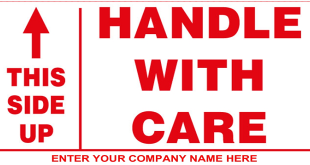Every household should strive to save money. Whether it’s stashed for financing retirement or intended to pay for a rainy day without debt, a stash of cash is a vital sign of healthy personal finance. While it’s a good idea to have some cash available, putting it in a box under the bed is not a good idea. So here are some options for those looking to invest the savings they’ve accumulated.
High-Yield Savings Accounts
If you’re looking to keep your money as liquid as possible while still earning more interest than most savings accounts will offer, a high-yield savings account might be a good option. According to the experts at SoFi, high-yield savings accounts come with federal deposit insurance for up to $250,000. Therefore, you’re not in danger of losing your money if the market goes sideways.
Regular savings accounts at significant banks will frequently earn less than 0.10% per year. A high-yield savings account will sometimes earn north of 1%. Looking for the highest savings account interest rate is a good idea if the account is federally insured. If the Federal Reserve increases interest rates, these numbers could rise in the future, although SoFi notes that the increase will likely not keep up with inflation. You can deposit as much as you want in these accounts, although keeping more than the amount insured by the government might be questionable because of the increased risks. However, you are limited on the number of withdrawals you can make each month.
Certificates of Deposit
Certificates of Deposit, better known as CDs, have more restrictions than a savings account. In a low-rate environment, the rates will sometimes be less than those offered by high-yield savings accounts. CDs come with varying terms ranging from three months to five years. Those who want to access their money before the term ends will have to pay the penalty. Frequently, this equates to one month’s interest. The flexibility afforded by high-yield accounts will usually make them more beneficial in an environment with low-interest rates.
Bonds
Bonds are debt instruments that governments and companies use to finance current projects. In exchange for allowing them to use money in the present, bond issuers promise to pay interest to those who hold the bonds and then return the initial principal at the end of the term of the bond. Many times, these terms are 20 or 30 years into the future.
Currently, the US government issues short-term T-bills that pay a low-interest rate. These are common holdings in bond funds that provide flexibility. However, the government also offers I-bonds. These bonds are indexed to inflation. As inflation increases, the government increases the interest rate to allow investors to maintain the purchasing power of their investment.
Stocks
Stocks are riskier. Therefore, investors should not hold emergency cash in stocks. Once there is a healthy emergency savings account in place, investing in stocks can go a long way toward building wealth for the long run. The increased risk in the short run usually brings higher rewards in the longer term. Over the past century, the stock market has averaged around 10% per year over the long run.
Investing your savings into a high-yield savings account can be an excellent way to prevent unexpected expenses from becoming an emergency. Finding the highest rate is the best practice to avoid inflation taking an even more significant hit to a household’s purchasing power.
 Pagalmusiq.com Popular News Update Website | Pagalmusiq.com
Pagalmusiq.com Popular News Update Website | Pagalmusiq.com




